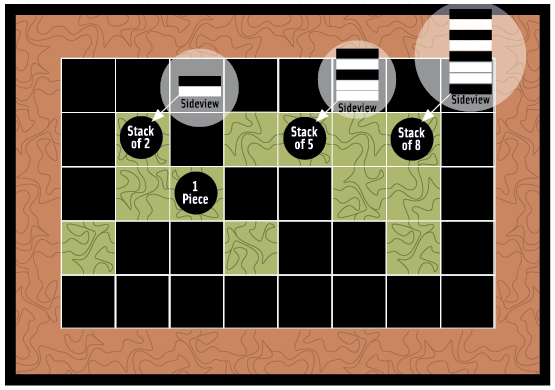War Cans
Wars Cans is a multidimensional strategy game where your pieces move based on their composition. Whoever is at the top of a stack controls the entire stack. The game is over when only one player is able to move. Each game is unique as the board layout is randomized and evolves as the game goes on.
Contents: Board / 16 pieces / 40 Tiles / Instructions.
Objective: To keep your opponent from moving.
Setup: Each player starts with 8 pieces placed on the board as shown below.
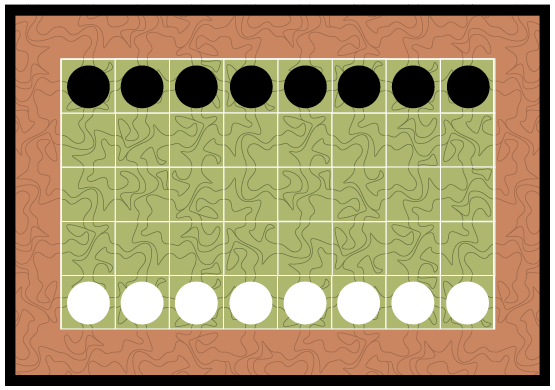
Board: The board is made up of 40 black squares overlaid with 40 green tile squares as shown above. Pieces can move across black squares, but can never land on them. Green tiles are removed from the board when a piece or stack of pieces moves off the green tile. A black square is exposed when a green tile is removed. Each black square counts as a move when passing over the square. Below are two examples of green tiles that have been removed in some opening moves.
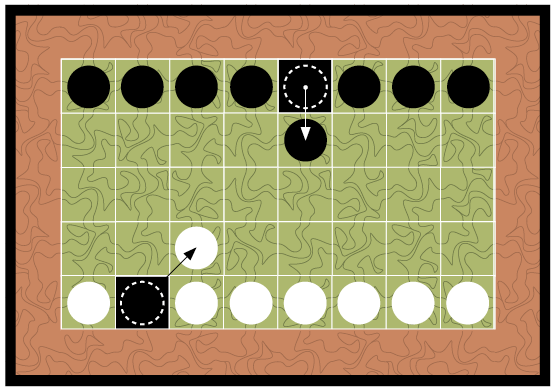
Pieces: A single piece can move one space in any direction,as long as it doesn’t land on a black square. Pieces can land on other pieces, both their own and their opponent’s. When one piece combines with another piece, whether it be their own, or an opponent’s piece it gains the ability to move another space in any direction. Every piece in a stack enables the stack to move that number of spaces. For instance, if a stack has 3 pieces it can move 3 spaces as shown in the figure below. Pieces must always move in a straight line.
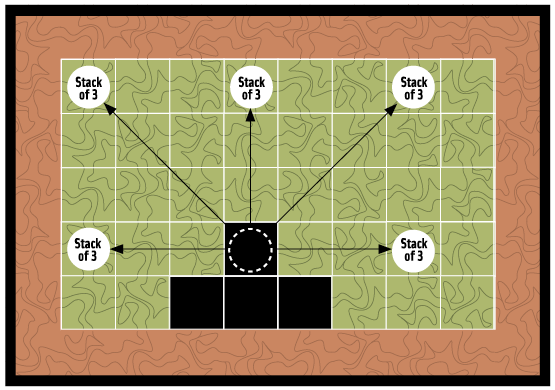
The figure below shows how you can have different outcomes from a stack of 3 in the way you move it. Pieces from a stack can be disturbed along its path. When a piece is left on the path of movement it must always be from the bottom of the stack.
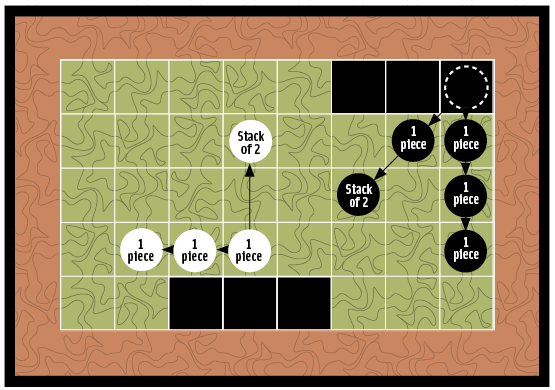
Black Squares: The figure below shows some examples of how a stack can cross black squares and that a stack or piece cannot land on any black squares.
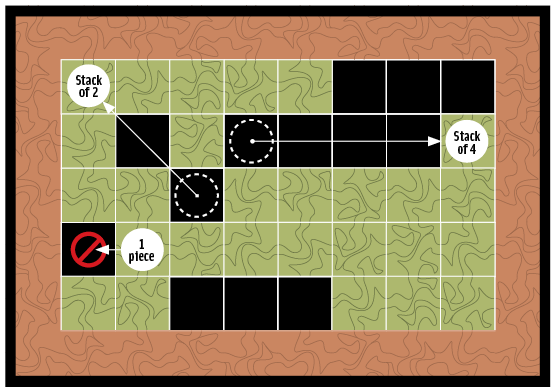
Capturing and Releasing: When a piece is placed on top of an opponent’s piece or stack that piece, or stack belongs to the one with their piece on top of the stack. If a the top piece of a stack is moved from the stack and the piece on the top of the remaining stack is the opponent’s then the stack goes to the opponent. Below are two showing a before and after example of a player capturing another player’s pieces.
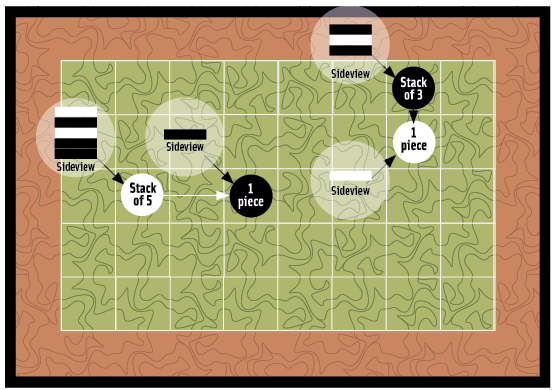
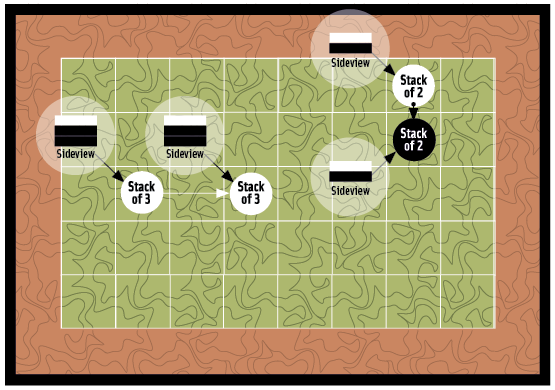
Winning: When a player is unable to move the game is over and the one who made the last move wins. Below is an example of a game played out with black winning.
